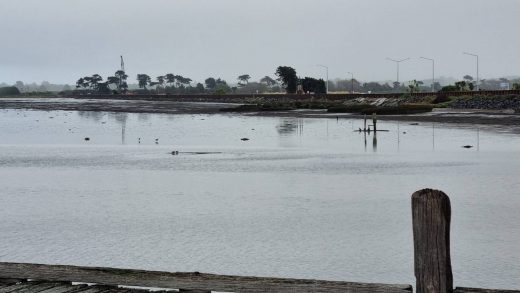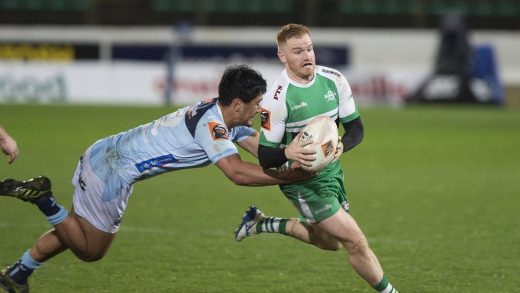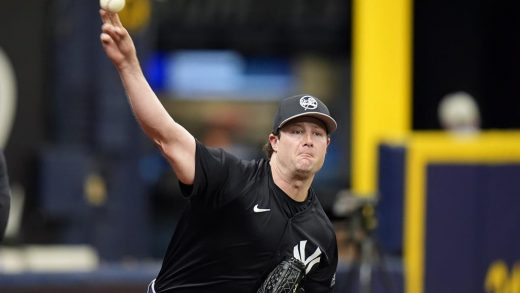
New Zealand is often referred to as a country that punches well above its weight to the point of cliché; the compliment typically hitched to our agriculture, our economics, and our ability to crank out Lord of the Rings films.
It also, inevitably, is a sentiment associated with our exploits in the world of sport. And one of these sports that is perhaps overlooked more than most is car racing. For the better part of a decade, New Zealand has been represented at the highest level of almost every major motorsport code around the world.
Whether it’s Brendon Hartley and Earl Bamber winning the 24 Hours of Le Mans multiple times, Scott McLaughlin and Shane van Gisbergen becoming dominant forces in Supercars, Scott Dixon breaking records in IndyCar, Michael Pickens upstaging some huge names in speedway – our global reputation in the contemporary motorsport world is rarely questioned.
What’s a little perplexing, then, is the lack of limelight these stars get at home.
[embedded content]
It’s the same for our nation’s motorsport circuit racing championships, too. This makes more sense in some ways, given that most of our major series have struggled in recent years thanks to petty political squabbles and a failure to capture the imagination of local petrol heads.
READ MORE:
* Formula 1 ‘son of a gun’ extends championship lead in Toyota race series
* Kiwis face off against overseas hot shots at Toyota opener
* Is Scott McLaughlin good enough to take on Formula 1?
* Liam Lawson swaps Formula Two for Japan’s Super Formula series in 2023
quick
charge
Get the latest EV news, delivered to your inbox
Sign up now
But, there are still diamonds in the rough. And one of them is the New Zealand Grand Prix.
The term ‘Grand Prix’ might sound like a fairly cut and shut piece of sporting nomenclature. But it’s actually a rather coveted title handed out by the Fédération Internationale de l’Automobile to only the most significant events on the motorsport calendar.
Inevitably, most are Formula 1 events. But two are not; our domestic Grand Prix and the Macau Grand Prix.
[embedded content]
The New Zealand Grand Prix was first held in 1950 at Ohakea in Bulls, won by John McMillan. After a few years of break, the title returned in 1954 at Ardmore. A year later, it was won by its first overseas driver; Prince B. Bira of Siam or Birabongse Bhanudej Bhanubandh – the first Southeast Asian driver to race in Formula 1.
New Zealand’s circuit racing scene in the 1950s and ‘60s became part training camp, part holiday for the world’s greatest drivers, with many an F1 star crossing the globe during the end-of-year off-season to enjoy the New Zealand Summer, while dabbling in a bit of motorsport along the way.
The scenes were extraordinary, with archival images of events at places like Pukekohe showing crowds some four or five people deep (in an era when spectator safety was an afterthought), clamouring to get as close to the on-track action as possible.
[embedded content]
Through this era, the New Zealand Grand Prix was the jewel in the local crown; a race that everyone wanted to win. Visiting stars from Europe used the event to continue existing rivalries from their season’s gone, while local drivers used the race as an opportunity to put themselves on the global map.
Winners of the New Zealand Grand Prix in this early era included F1 world champions Jack Brabham, John Surtees, Graham Hill, Jackie Stewart, Keke Rosberg, and nearly champions Stirling Moss, Chris Amon, and Bruce McLaren. The incredible, eternal Kenny Smith also nabbed a few wins, too.
One might suggest that these days the glamorous world of Formula 1 has very little connection to New Zealand relative to those days. But, if anything, that connection is growing. Thanks in large part to the New Zealand Grand Prix, which still runs today.
Matthew Hansen
Shane van Gisbergen leading Chris van der Drift and Brendon Leitch during the last Grand Prix weekend. Van der Drift and Leitch will compete in this weekend’s Grand Prix event.
Towards the back end of the ‘80s, through the ‘90s, and into the new millennium, the Grand Prix morphed from a retreat for the world’s stars to being a yardstick for the next generation of racers to aim at – and subsequently a handy guide for talent scouts wanting to find the next world champ.
Before they went on to be world-beaters in touring cars, Paul Radisich, Craig Baird, and Greg Murphy were New Zealand Grand Prix winners. The same was true for Supercars regular Fabian Coulthard and A1GP ‘Black Beauty’ pilot Jonny Reid.
Since 2006 the New Zealand Grand Prix has been an integral part of the Toyota Racing Series, now known as the Castrol Toyota Formula Regional Oceania Championship. And while Formula 1 drivers no longer cross the globe to take on the event, a striking number of drivers from the Toyota series that have taken on the Grand Prix have gone on to F1 stardom.
Luca Bruno/AP
McLaren F1’s Lando Norris won the New Zealand Grand Prix and Toyota Racing Series title in 2016.
Four current F1 drivers, Lando Norris (McLaren), Lance Stroll (Aston Martin), Yuki Tsunoda (Alpha Tauri), and Guanyu Zhou (Alfa Romeo) competed in the New Zealand series, with Norris and Stroll winning the Grand Prix in 2015 and 2016. More than 20 Toyota series graduates have gone on to test or compete in F1.
A big carrot attached to success in the series these days is the amount of FIA ‘Super License’ points on offer to the winner of the overall title.
In order for a driver to secure a spot in F1, or any major circuit racing championship, they need to have acquired a certain number of Super License points in junior formulae. For any driver wanting to crack F1, accumulation of points is vital.
Tayler Burke
Austria’s Charlie Wurz is the current series leader, and arguably the one to beat this weekend.
The Toyota Formula Regional Oceania series offers 18 Super Licence points to its champion. For reference, the drivers that win this year’s Supercars championship and NASCAR series will get just 15 Super Licence points each. The FIA F3 champion gets 20 points, and the FIA F2 champion 40 points.
The 2023 New Zealand Grand Prix takes place this weekend at Hampton Downs Motorsport Park in Waikato. Although the series is still in the rebuilding phase in the wake of the Covid-19 pandemic, a full 20-car grid will face the green light when the Grand Prix commences on Sunday afternoon.
The field features eight New Zealanders, and 12 drivers from Europe, America, and Asia.
Bruce Jenkins
Hedge leads the eight-driver local contingent, and is just six points away from the series lead.
The championship lead currently belongs to Austria’s Charlie Wurz, son of former F1 regular Alexander Wurz. His closest rival is Auckland teenager Callum Hedge; fresh from a race-winning season in Porsche Carrera Cup Australia where he races under the Earl Bamber Racing banner (Bamber being yet another former New Zealand Grand Prix winner).
The 67th New Zealand Grand Prix is the third of three Toyota Formula Regional Oceania Championship races held this weekend, with the event doubling as round four of the five-round championship.
Race one is scheduled for 2.55pm on Saturday February 4. Race two follows at 1.00pm on Sunday February 5, with the New Zealand Grand Prix capping off the day at 4.05pm. The Formula Regional series is supported by the Toyota 86 Championship, Napa Central Muscle Cars, Hi-Q Components Formula First, Golden Homes GT New Zealand, Formula Ford, GTR NZ, and the Valvoline D1NZ National Drifting Championship.


